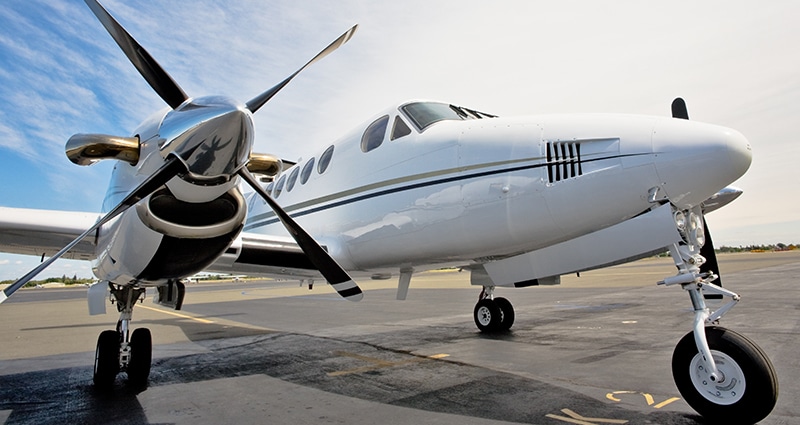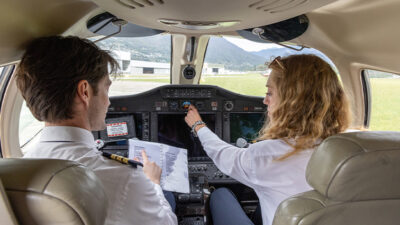Minding The Gap

Your phone rings and one of your captains reports he had an altitude deviation during the JAKIE arrival procedure into teterboro. The crew was assigned a “Descend Via” clearance and VNAV did not capture a step down fix. A recent external audit validated your written procedures and you are sure they measure up to industry best practices. But the incidents continue to occur. You begin to ponder.
Are the written procedures clear? Are crews trained and evaluated to that standard? Do they follow company procedures as a matter of habit?
One measurement of a company’s safety culture can be established by answering a simple question: “Is there a significant gap between policies and practices?” If you discover gaps, you are not alone. Syndny Dekker points out in his book, The Field Guide to Understanding Human Error, “A mismatch between procedures and practice almost always exists; it is never consistant.”
Measure Your Gap
How large is your gap? Is it growing or shrinking? If it’s growing, you have procedural drift. Are you minding the gap? If you contract with an external auditor, how often do they leave the conference room to measure the effectiveness of your operational procedures?
If your external auditor doesn’t evaluate a gap, who should?
Use experts who are already on your payroll, including the pilot who had the altitude deviation. On a regular basis (at least annually), sit down with each pilot, mechanic, and flight attendant to ask, “Which policy or procedure is most difficult to follow?” The feedback can drive changes to policy and empower employees to facilitate change. When you ask your employees what needs to be changed, you must be prepared to actually change and publicize the changes. Let me clue you in: Pilots talk. They talk more than they read safety memos. Word quickly spreads if someone is asked their opinion and nothing changes; always provide feedback even if the message is your commitment to the existing procedure.
From personal experience in my own company, when we engaged our pilots and reviewed our published guidance regarding automation in the cockpit, we found our policies unorganized. Each policy was written to take care of a past incident; the guidance was located in many different sections of our manuals. When we revised our approach, it lead to improved training and application in the cockpit.
When we asked our employees for input, we uncovered three primary reasons for procedural drift:
- Unclear policy.The written policy made sense to those who wrote it, but not to those who applied it; the rewritten policy rejuvenated compliance.
- The intent of the policy was not clearly communicated or trained. Communicating the reason for the policy is often enough to increase compliance. Our automation policy requires a two-step process for data entry and verification. Many automation errors were occurring when one pilot was off frequency and a change to the clearance was issued by Air Traffic Control. The pilot flying considered the change as routine and the two-step process unnecessary. Once we communicated the trend in errors and set up scenarios in training to address this concern, the procedural drift disappeared.
- Aperception that company leadership did not support the policy. Dismukes, Berman and Loukopoulos comment in their book The Limits of Expertise: Rethinking Pilot Error and the Causes of Airline Accidents, “…(a) pilot’s stance towards SOPs greatly depends on whether they perceive management and flight operations to truly demand compliance with operating procedures or merely require lip service.” Ask yourself, “Do we encourage procedural shortcuts to make up time? Are we perfect role models?” You can emphasize your committment to managing risk through adherance to policies by following them yourself, even when it’s hard.
“Minding the Gap” is all about removing (or at least reducing) your organization’s procedural drift. You can make this happen as a part of your daily routine. Encourage honest discussions: “Which policy or procedure is most difficult to follow?” Fix the rules that are broken. Dump unnecessary rules. Communicate clearly and make sure YOU lead by example.
References:
Measuring Organizational Factors in Airline Safety.
www.humanfactors.illinois.edu/Reports&PapersPDFs/TechRe-port/03-11.pdf
Safety Promotion.
www.signalcharlie.net/Promotion
Failure to adapt or adaptations that fail: Contracting models on procedures and safety.
 Advanced Aircrew Academy
Advanced Aircrew AcademyAdvanced Aircrew Academy enables flight operations to fulfill their training needs in the most efficient and affordable way—in any location at any time. We do this by providing high quality professional pilot, flight/cabin attendant, flight coordinator, maintenance, and line service training modules delivered via the web using a world class online aviation training system.
https://www.aircrewacademy.com/
© 2024 Advanced Aircrew Academy. All Rights Reserved.
Next ArticleRelated Posts

Safety in Numbers: Trends in Aviation Accidents and Incidents
Every accident is preventable; the problem is that we don’t know how to prevent it until after the accident happens. However, what we can do as an industry is honor the anguish of each event by sharing the information, the mistakes and the outcomes to improve safety for everyone.

Is ChatGPT Ready To Analyze My SMS Portal’s Safety Reports?
While industry experts continue to design the next-gen AI-backed SMS software solution, safety managers can use ChatGPT to help them treat safety issues, audit findings and classify hazards contained in their SMS reporting.

